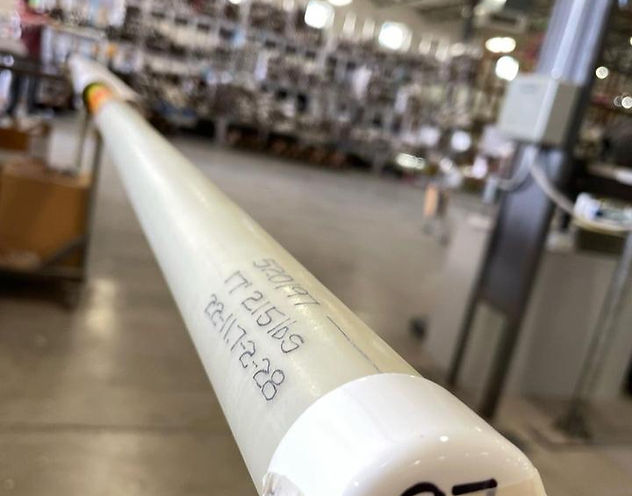Long Term Athlete Development
- paul29416
- Oct 3, 2024
- 4 min read
The Importance of Long-Term Athlete Development in Pole Vaulting
Long-term athlete development (LTAD) is critical for pole vaulters, where technical precision and physical capabilities are developed gradually. We anticipate it can take as long as 10 years to develop proficient technique therefore LTAD programs should emphasise a structured approach to training, managing loads, and monitoring growth during adolescence, ensuring athletes reach their potential while minimising injury risk.

Pole vaulting demands a balance of speed, strength, coordination and technical proficiency. Managing training loads is critical for athletes to avoid overuse injuries. Gradual progression in sprinting, jumping, and strength training helps athletes build key physical attributes without placing excessive stress on their bodies, especially in younger athletes. Incorporating periodisation (alternating periods of high and low intensity) optimises performance while allowing for recovery.
Growth spurts during adolescence require careful monitoring. Rapid changes in height and weight can alter biomechanics and increase injury risk, particularly to joints, tendons, and bones. Pole vaulters are particularly susceptible to injuries given the brutal nature of the training and the event itself. Tracking growth helps coaches adjust training loads to the athlete’s changing body whilst maintain correct technique.
Tracking Example:
A fairly easy way to monitor growth changes and related pain is to set up a weekly height, weight, pain chart. If we track these variables on a regular basis we may notice trends. For example we may note that following a 2-3 week period of normal adolescent growth in height our athlete may start to experience pain.
By understanding when a pattern develops we can manipulate training volume, frequency and/or intensity to allow our athlete to continue to train safely.
The examples to the right highlight a growth spurt at the end of October and March followed by periods of pain. We can immediately react and modify training loads that may prevent our athlete entering a pain phase.
Why do this?
In my experience within elite sports medicine, I have frequently observed both athletes and coaches overlooking signs of growth and dismiss discomfort until they are compelled to take a break due to reaching a critical point. This can lead to injuries and a period of detraining.
By understanding growth spurts in adolescents, we can proactively prevent the need for enforced detraining by maintaining and adapting training methods. Engaging in a reduced volume or intensity of training is preferable to ceasing training altogether, as this facilitates continued progress and development.
It is important to note that this approach may not be suitable for all individuals. Exercise caution and ensure that you possess the necessary confidence in overseeing your athletes. It is crucial to recognise that this method may not be appropriate in certain situations, such as when considering female athletes undergoing puberty, where a weekly weigh-in might not be advisable. Moreover, obtaining consent from both the athlete and their parents may be required when implementing this approach. It is advisable to consult with your athletics club and/or governing body to ascertain the legal implications of adopting this method.
Injuries & Prevention
Injury prevention measures, to key areas of stress and adequate recovery help counteract the physical changes that come with growth. Additionally, maintaining a balanced diet and ensuring good sleep hygiene supports both growth and athletic performance.
During adolescence, rapid growth spurts can lead to pain and discomfort in several key areas of the body, particularly as bones, muscles, tendons, and ligaments develop at different rates. Here are the most common areas of pain related to adolescent growth:
Knees (Osgood-Schlatter Disease)

For pole vaulters, repetitive jumping and sprinting place considerable stress on the knees, particularly the patellar tendon. During rapid growth spurts, this tendon is prone to overuse injuries like Osgood-Schlatter disease. As the bones grow faster than the muscles and tendons, the increased tension on the growth plate at the tibial tuberosity can cause significant pain, limiting an athlete’s ability to train effectively.
Heels (Sever’s Disease)
Pole vaulters rely heavily on explosive take-offs, sprinting and plyometric training that can aggravate the Achilles tendon and heel area. Sever’s disease, a common heel pain in adolescents, can be triggered by the repetitive force exerted on the calcaneal growth plate during sprinting and jumping phases of the vault. This condition often flares up during growth spurts and can interfere with an athlete’s ability to perform.
Lower Back (Spondylolysis)
Rapid growth can cause lower back pain due to a stress response or a stress fracture in the lumbar vertebrae, predominantly the pars interarticularis. This condition is exacerbated by repetitive high force of lumbar extension or hyperextension and rotational movement, that are occur during take off.
Hips (Hip Flexor and Growth Plate Pain)

The approach run and take off phase of the vault places tremendous pressure on the hip flexors. During growth spurts, the muscles and tendons around the hips may not adapt quickly enough to the growing bones, leading to tightness or pain.
Hip pain can also stem from inflammation or injuries in the growth plates around the pelvis, especially from sprinting.
Shoulders (Growth Plate Injuries)
Pole vaulters use their shoulders extensively during the plant, take off and swing phase of the vault. Adolescents undergoing growth spurts can suffer from growth plate irritation in the shoulder, similar to conditions seen in overhead sports like Javelin or gymnastics.
By integrating scientific principles of LTAD and monitoring growth changes, coaches can guide pole vaulters through a healthy, sustainable development process, maximising their performance potential while minimising injury risks.





Comments